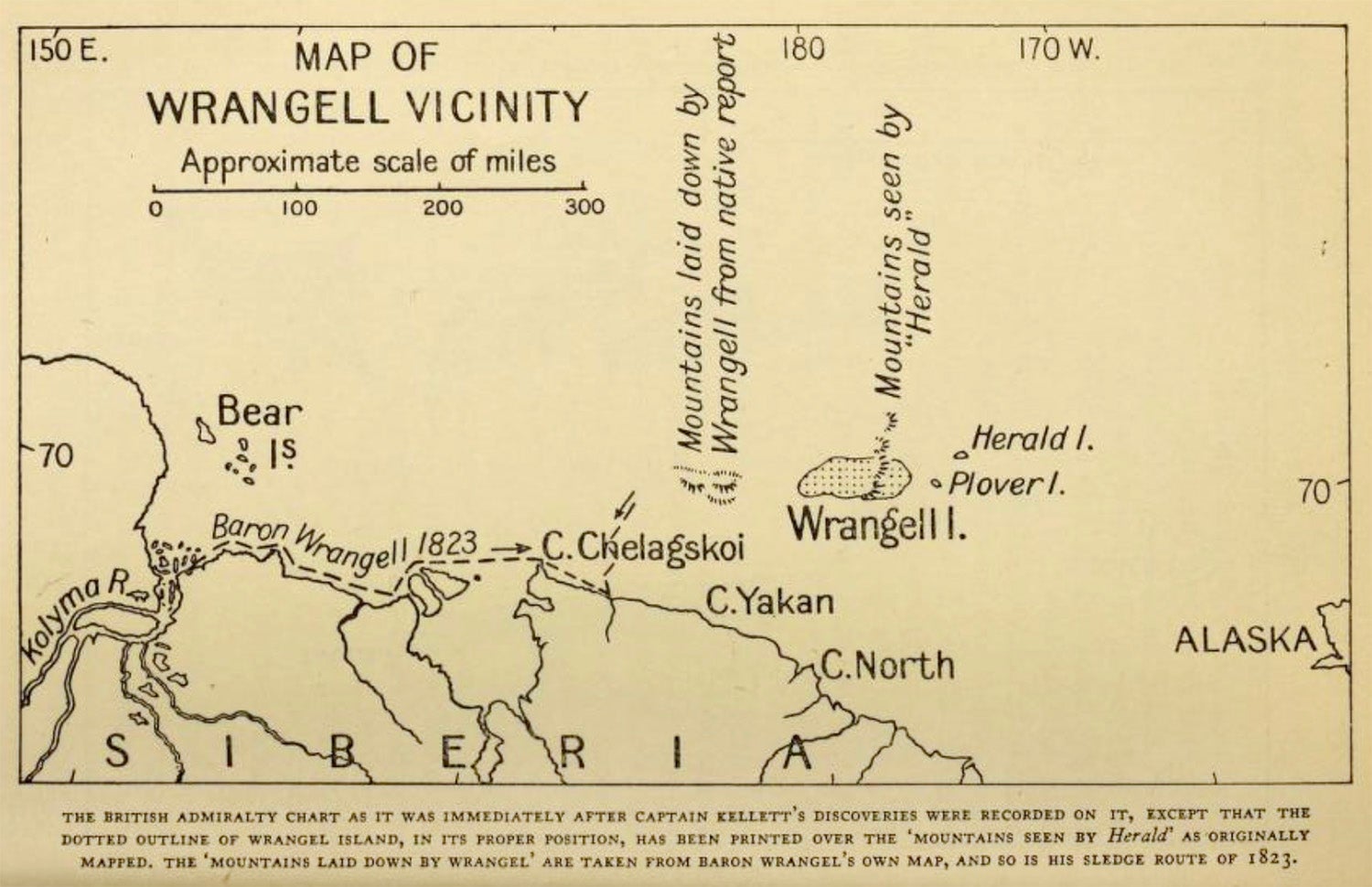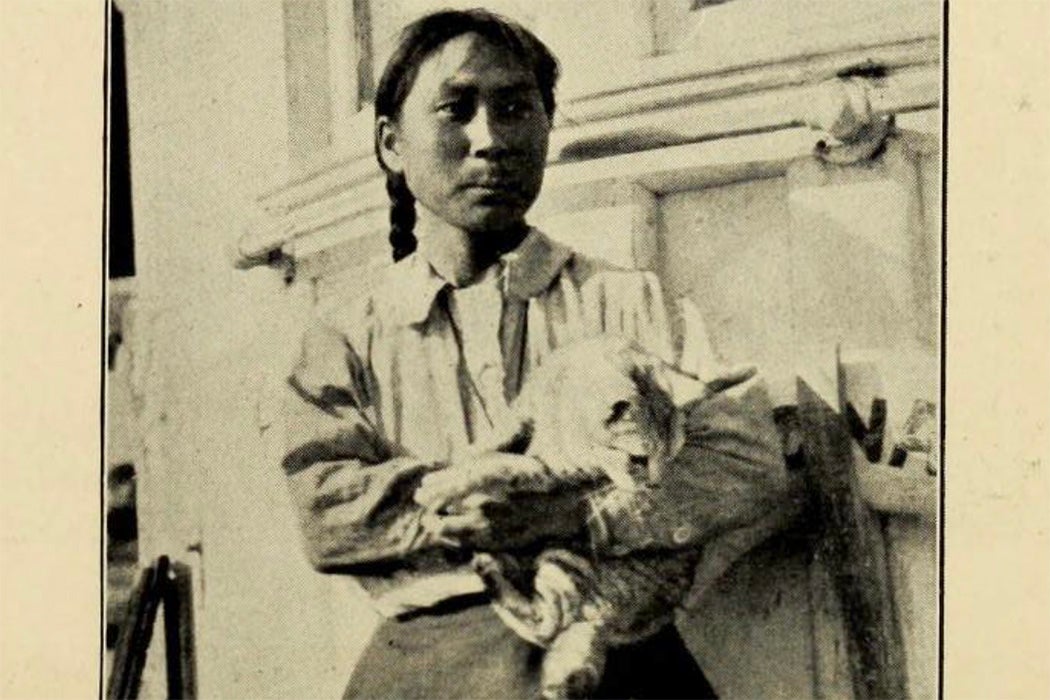It’s August 19, 1923, and the crew of the Donaldson have finally reached the target of their rescue mission: Wrangel Island. They head toward the miserable collection of huts huddled on the shore. In the first, they find a decomposing corpse. In the second, they discover a young Iñupiaq woman called Ada Blackjack, curled up asleep with her tabby cat, Victoria.
Eighty miles long and thirty wide, Wrangel Island lies low in the Arctic Ocean off the coast of Siberia. Storms batter it and freezing winds glance off the ice, stirring the fog that blankets the bleak landscape. Blackjack has survived alone in this savage environment for fifty-seven days. Unlike her deceased teammates, she has a secret weapon: a sickly little boy called Bennet.
Unlike many other female explorers, Blackjack didn’t grow up dreaming of far-flung places. She was known to be shy and had a crippling fear of wild animals—polar bears in particular. Born Ada Delutuk in 1898 or 1899 to Iñupiaq parents near the gold rush town of Nome, Alaska, she was raised by Methodist missionaries. Rather than learning wilderness skills, she studied the Bible and was instructed in sewing, housekeeping, and cooking Western food.
At age sixteen, Delutuk married a local dog musher called Jack Blackjack. The couple had three children—two of whom died—before Jack abandoned his family on the Seward Peninsula in 1921. Destitute, Ada walked forty miles back to Nome, carrying her five-year-old son, Bennett, who suffered from tuberculosis, most of the way. Knowing that she didn’t have the money to buy the medicine he needed, she made the heart-wrenching decision to put Bennett in an orphanage. Vowing she’d find a way to bring him home, she set out to find work.
Around this time, the controversial but charismatic explorer Vilhjalmur Stefansson was plotting a fourth expedition to the Arctic. His first three trips had provided him with material for several books written in dashing prose: The Friendly Arctic, My Life with the Eskimo, and The Fat of the Land. Tales of Inuit communities living in luxury captured the imaginations of countless would-be explorers, although critics pointed to a lack of rigor and accused him of exaggeration.
Nonetheless, in 1921, having been refused support by the Canadian government, Stefansson secretly planned an expedition to send a small group to Wrangel Island to see if it had the potential to host a year-round colony (this in spite of the fact that the United States government had determined that the island belonged to Russia). A highly publicized lecture tour inspired four idealistic Americans, all in their teens or twenties, to sign on. Frederick Maurer and E. Lorne Knight had both been part of Stefansson’s third expedition to the Arctic, but Milton Galle and Allan Crawford had nothing to equip them except their enthusiasm.

Stefansson showed little interest in their supplies and, when the expedition departed from Nome, locals were shocked that they were only taking food to last six months. The four planned to live “off the fat of the land” as they’d read about in Stefansson’s books. The experienced explorer did, however, offer them one piece of advice: to take as many Indigenous women with them as possible to act as seamstresses. Given the crew’s lack of experience, it’s little surprise that only one woman agreed to take the risk. Blackjack signed up in exchange for $50 a month, far more than she could earn taking on odd jobs in Nome. In September 1921, she boarded the Silver Wave with only the four men and the ship’s tabby kitten, Victoria, for company.
The first year on Wrangel Island went surprisingly well, although the group ate most of its supplies during the winter. When spring came, seals and walrus were plentiful, and the men spent their days trapping while Ada ran the camp. However, when the weather turned, so too did their luck. The ship that was to rescue them, the Teddy Bear, was forced to turn back due to bad weather. Gradually, it dawned on them that they would have to survive another winter.
In early 1923, the situation was dire. The party was starving, and Knight was dying of scurvy. On January 28, Crawford, Maurer, and Galle set out with the remaining sled dogs to seek help in Siberia, leaving Blackjack behind to nurse Knight. The blankness of the Arctic swallowed the traveling trio whole. Their remains were never found.
For the next six months, Blackjack nursed Knight, learned to hunt and shoot, and walked six miles every day to source firewood. Both parties were miserable. Knight’s diary reveals that he was convinced Blackjack was deliberately starving him, while hers details his constant criticism and her struggle to do the work of four men.
Fearing for her own life, on April 2, Blackjack penned a touching diary entry: “If anything happen to me and my death is known, there is black stirp [sic] for Bennett school book bag, for my only son. I wish if you please take everything to Bennett that is belong to me.”
On June 23, Blackjack used Galle’s typewriter to record Knight’s death. Except for Victoria-the-cat, she was utterly alone. Given that she was close to starving herself, it would have been understandable if she too had submitted to the biting cold. However, no doubt bolstered by Bennett’s memory and a sense of responsibility for Victoria, she made a final stand.
She moved into the supply tent to escape the smell of Knight’s corpse and built a gun rack above her bed. She also built a viewing platform so she could spot approaching polar bears. She crafted an umiat (skin boat) that allowed her to hunt far more efficiently and made soups from algae and lichen. In her spare time, she sewed a pair of slippers for Bennett and experimented with the team’s photography equipment. A self-portrait shows her standing outside the camp, a surprisingly serene expression on her face.
Blackjack went on to master her environment. The crew of the Donaldson, who arrived on the scene in late August, noted that she could probably have survived another year. When she finally arrived home, she was heralded a female Robinson Crusoe. Stefansson, on the other hand, was accused of negligence by the families of the dead men and just plain ignorance by other interested parties, including the captain of the Teddy Bear.
Weekly Newsletter
In order to clear his name, he bought Blackjack’s diary and it formed the basis of his book, The Adventure of Wrangel Island. Although she had been promised a share of the royalties, she saw nothing. She was also underpaid for her time on Wrangel Island. However, she had enough for the one thing she wanted more than anything—to take Bennett to a tuberculosis specialist in Seattle.
Mother and son remained close throughout their lives, though Bennett tragically died of a stroke in 1972 at age fifty-eight. Blackjack mistrusted reporters and gave few accounts of her story, preferring instead to spend a quiet life herding reindeer and trapping. When she died in 1983 at the age of eighty-five, she was buried beside the son whose memory had kept her alive during two long years on Wrangel Island.
Where Victoria the cat was buried has been lost in the mists of time…
Support JSTOR Daily! Join our membership program on Patreon today.







